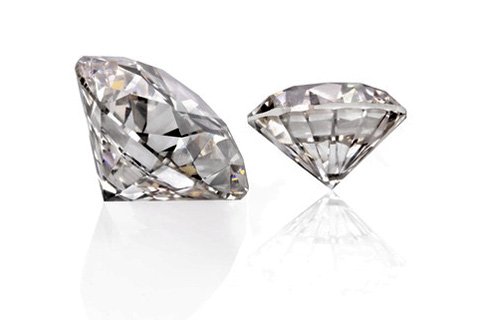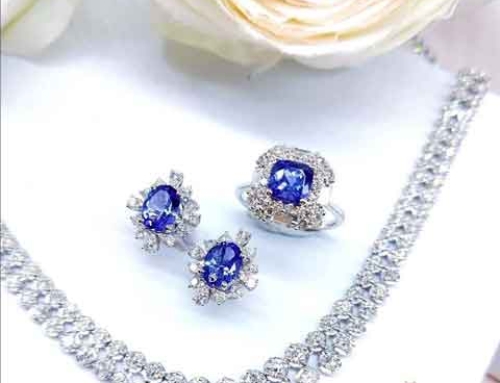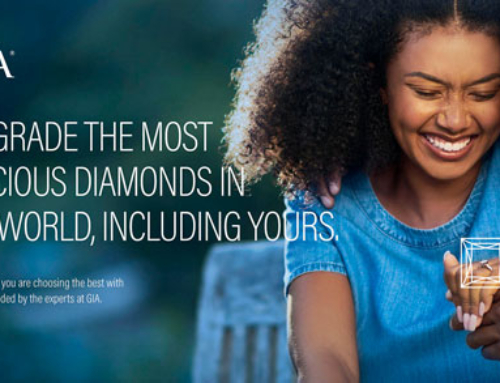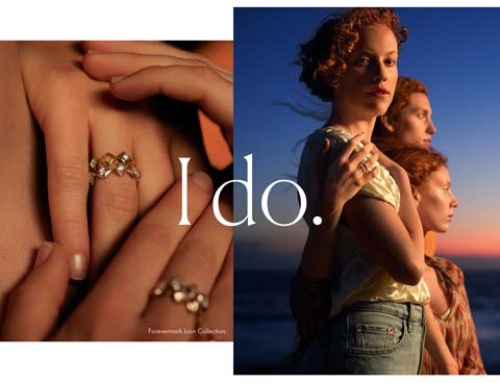Who could buy a jewel set with a lab grown diamond? What are the arguments that make it really fly? Me for instance, with all I know about natural diamonds, could I buy a lab grown diamond?
This question is indeed legitimate: how to understand the desire to buy a particular product if you do not try to put yourself in the shoes of potential buyers?
I asked around me whether buying a lab grown diamond jewel was conceivable and the answers were as varied as the interlocutors … No one categorically said no.
But two key words that always returned were: the “buying opportunity” and the “natural“. Around these, other words and arguments play that, all together, will motivate or not a purchase decision:
Design
Let’s be honest, design will never take a back seat. Anyone who buys a jewel is necessarily motivated by the desire to wear it or to see it worn. If it does not please the person for whom it is intended, the purchase is worthless or had no reason to be. And in this case, all other arguments below are insignificant.
So what’s on offer with a lab grown diamond?
Lightbox obviously, in the US market. There are others, but let’s stop at this startup launched by De Beers. Being backed by one of the biggest names in the natural diamond industry paradoxically gives Lightbox extra credit, as no one has any doubts about their expertise in the field of diamonds.
The website is functional, pleasant, the photos of the worn jewelry are beautiful and engaging and one would identify well with this story … As for the design per se (carried by the image conveyed and the staging of the pieces), it is classic, sober, hyper accessible. I am not blown over by their propositions, but I think it will appeal very well to the greatest number. Here the lab grown diamond jewel is really related to the purchase of a fashion jewel, without being drowned in a plethoric offer, which allows to continue to associate these lab grown diamond jewelry to a certain degree of quality and excellence in the absence of rarity. The simple ear studs in white diamonds are really convincing …
Others are positioning themselves in a very modern jewelry niche, resolutely in the spirit of our time; they even tease high-end jewelry and are inspired by it, offering jewelry set with lab grown diamonds at lower prices (around 30 to 40%) than natural diamonds.
The collections show a trendy and ethical look in their choice of names. The models are designed to be easy to live with and reach out to young women who want to have fun: better than an It-bag (more discreet) and more durable!
So yes absolutely, these designs are engaging and will find their audience.
The price
On the pages of the websites 12Fifteen (that doesn’t mince it’s words against the natural diamond industry!) and of Diamond Nexus, who offer solitaires, rings, necklaces and earrings with lab grown diamonds, I have read the following arguments:
“Nexus Diamonds cost approximately 70 – 90 percent less than mined diamonds.”
and “Prices change because the diamonds change. The stone gets bigger and/or more perfect, it costs more. Metal costs change on the daily.”
Simple, concise, irrefutable. 4Cs are not as easy to understand nor as accessible to all. We must combine information, compare prices per carat, check setting, metal, size, certificates…. in short, it is not so easy to buy a natural diamond and understand the price for the non-initiated. When I wrote this article, I was able to buy 1.03-carat Diamond Nexus Cushion Stud Earrings for $ 243.75 (Black Friday Week); or a ¼ carat solitaire on a necklace for $ 300 at Lightbox. Easy enough to buy a fashionable jewel, with a beautiful stone, easy to wear and without overburdening one’s budget.
So yes, the price is certainly an excellent argument in favor of the lab grown diamond.
Ethics
The ‘final curtain’ argument of producers of lab grown diamonds! Which, as far as I am concerned, seems to me the least convincing argument.
What bothers me in this argument is that it is given in opposition to the natural diamond industry. This is an argument of the type of “all clean” against “all dirty” – which is already ethically debatable! – in addition to being unfair. The assertion is simply not tenable. Every industry has an environmental cost, and nothing so far allows us to compare lab grown diamonds to natural diamonds in a precise way.
We are not going to dwell on the importance of the diamond industry for the economic development of certain African countries.
On the other hand, presenting ethics as a criterion for choosing lab grown diamonds is not an aberration in itself.
Some do it by talking about “an ethical and ecological alternative to traditional jewelry“. Or by focusing on the high-tech feats that reproduce nature with a clean “conscience“, while respecting social and environmental criteria.
In short, the discourse here is positive, not overly sophisticated (so that each and everyone can get out of it what he or she wants!) and appeals to the values of each without truly harming the natural diamond industry. There is no aggression, just another “proposal“.
So, yes, ethics, in that sense, is an argument.
The occasion (reason for purchase)
Or non-occasion actually?
For now, we tend to assume – as some studies show – that natural diamonds retain their prominent place in people’s hearts for “special occasions“: engagement or weddings. A symbol of “eternal” love. This is good news for the natural diamond industry, which tries to make this state of mind (conveyed by a communication campaign of genius) endure. That natural diamonds try to better represent love in all its complexity is a necessity.
Lab grown diamonds can play a big role without encroaching on natural diamonds – it is not said that they will not find their place in the field of engagement and wedding celebration, since jewelry manufacturers containing lab grown diamonds have already positioned themselves in this niche (apart from Lightbox, all the lab grown diamond jewelry sites I’ve explored have engagement and wedding headings.)
Nevertheless, there are a thousand opportunities to purchase, be offered or offer a jewel: a promotion, a new contract, special birthday, success in an exam, 10 years of marriage, etc. And if you want the beauty of a stone without being able to afford to spend a fortune … lab brown diamonds have their place. They could join semi-precious stones which are adopted by many inventive creators with subtle proposals and acclaimed by the influencers.
So yes, the occasion or the non-occasion is an argument.
Quality – perfection
It’s difficult to compete with lab grown diamonds on the field of quality. If they are all type IIA, how can one ask for this level of systematic perfection in nature? It depends on what is meant by “perfection“. A gemologist or connoisseur will favor a natural diamond, imperfect perhaps, even if very well placed on the 4C scale, but nevertheless EXCEPTIONAL. A perfect synthetic diamond will never be really exceptional.
But the quality of lab grown diamonds can still be an argument.
Natural
The natural diamond is in essence imperfect, rare and therefore exceptional. This argument is unbeatable … It is a precious object. The synthetic diamond has already lost (but did it ever have it?) this high-end image of the gemstone. Semi-precious perhaps, beautiful indeed. But if it reproduces nature, it does just that: reproduce it. Our era, hungry for meaning, is turning more and more towards naturalness and authenticity. Towards a rational consumption. Lab grown diamonds can be produced in bulk and reproduced identically, which gives us no guarantee of reasoned nor of exclusive production.
In this, natural diamonds win the battle hands down.
What conclusion can we draw from all this? It would be detrimental to our industry and naive to believe that the battle between natural and lab grown diamonds will be won by lab grown diamonds … or by natural diamonds. And by the way, is it genuinely a battle? The supply of natural diamonds will decline in the coming years, adding to their rarity and value. However, lab grown diamonds of gem quality, which are in their infancy, will find their place. There is an audience for this proposition.
These are just two different products. We just need the public to keep thinking that way about it. It is up to us to work for this to go in the right direction.







